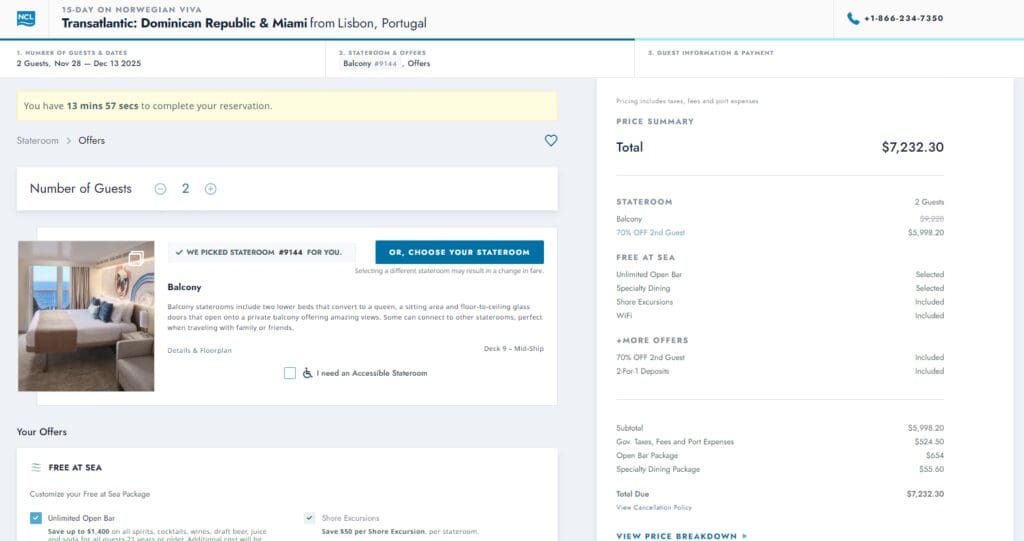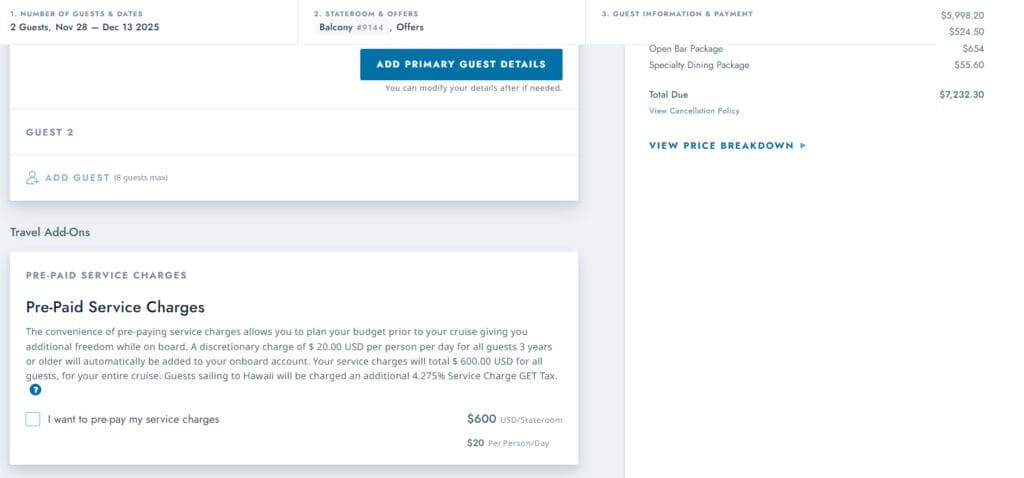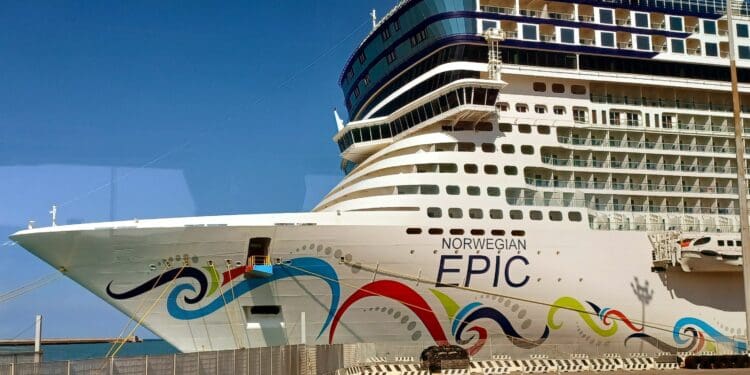Advertiser Disclosure: Eye of the Flyer, a division of Chatterbox Entertainment, Inc., is part of an affiliate sales network and and may earn compensation when a customer clicks on a link, when an application is approved, or when an account is opened. This relationship may impact how and where links appear on this site. This site does not include all financial companies or all available financial offers. Opinions, reviews, analyses & recommendations are the author’s alone, and have not been reviewed, endorsed, or approved by any of these entities. Some links on this page are affiliate or referral links. We may receive a commission or referral bonus for purchases or successful applications made during shopping sessions or signups initiated from clicking those links.
If you took the time yesterday to scan for some cruise deals on most of the major cruise lines you will have noticed the price has JUMPED from the same search say one month ago and sometimes by a lot.
But in reality they haven’t changed at all (other than maybe some sale offers that is).
So what changed? The State of California has enacted SB 478 that is called the “Honest Pricing Law” or “Hidden Fees Statute” and because California is so big (and so many cruise lines sail in and out of California) it was simpler to change the pricing everywhere for the major cruise lines.
The result is great for us consumers who can now search for a cruise and get a much better picture up front about the price of the cruise, yet even with the new law not everything is fully displayed on the first search screen and that is still a bit frustrating. Take a look.

I have yet to cruise on the new Norwegian Prima class of ships. The Viva, the second in this class, has a transatlantic crossing in the fall of 2025. I simply LOVE crossings as they give you time to relax and really get to know the ship with many sea days. I also love transatlantic cruises because usually they are much cheaper, per day, than other sailings but maybe not so much in the example above. The price, when you first search, does include everything that is the taxes, fees and port expenses and is correct to the penny for the lowest price cabin available.
But everything is still not included in that first search. What for example?

I am using an NCL balcony cabin on the Viva but you can compare this to your favorite cruise line and see how the prices change as you add current promotions. NCL almost always has their “Free at Sea” promo going that gets you the lower level “free” adult beverage package. It is not 100% free (thus the quotes) because you still have to pay a daily gratuity on the beverage package that will run you daily $20-25 per person. Nor does the first displayed price include the gratuity for the specialty dining restaurants promo either so that is not displayed until you get to the final totals page.
Oh one more major fee is not included in either the initial search or the “final” price page and that is the daily gratuities for the staff onboard. Take a look:

NCL has one of the highest daily gratuities fees and you can choose to pay for it upfront when booking the cruise but again SB 478 does not require this to be included in the search price so in a shock to no one the cruise lines, at this point anyway, will not display this but know you will still have to pay them either upfront or before you leave the ship (unless you request them to be adjusted or refunded for some reason thus they are in fact optional and per SB 478 they can thus be excluded in the first price search).
Bottom line this new California law does help you get a better overall picture of the price of your cruise when you begin your search but depending on the promotions you choose you can still expect the final cruise price to be much higher in the end and even more so when the gratuities are included! – René
Advertiser Disclosure: Eye of the Flyer, a division of Chatterbox Entertainment, Inc., is part of an affiliate sales network and and may earn compensation when a customer clicks on a link, when an application is approved, or when an account is opened. This relationship may impact how and where links appear on this site. This site does not include all financial companies or all available financial offers. Opinions, reviews, analyses & recommendations are the author’s alone, and have not been reviewed, endorsed, or approved by any of these entities. Some links on this page are affiliate or referral links. We may receive a commission or referral bonus for purchases or successful applications made during shopping sessions or signups initiated from clicking those links.












What I don’t like about these kind of laws is that they obfuscate (intentionally, I’d contend) the breakdown of what the amount that the cruise company is actually charging and receiving vs. those levied by the government(s). The “goal” here is to get people to be solely concerned with the one, big number while associating that with what the cruise line is charging, which takes attention away from the major impact on price that governmental taxes play. People won’t modify their behavior which in turn might lower taxes if they aren’t presented clear, easy to understand information regarding how they are being taxed.
I liked Spirit airline’s old way of breaking down pricing (I don’t think they do this anymore) on their site, referring to taxes as the “government’s cut”. That made it clear what is going where.
What I don’t like about these kind of laws is that they obfuscate (intentionally, I’d contend) the breakdown of what the amount that the cruise company is actually charging and receiving vs. those levied by the government(s). The “goal” here is to get people to be solely concerned with the one, big number while associating that with what the cruise line is charging, which takes attention away from the major impact on price that governmental taxes play. People won’t modify their behavior which in turn might lower taxes if they aren’t presented clear, easy to understand information regarding how they are being taxed.
I liked Spirit airline’s old way of breaking down pricing (I don’t think they do this anymore) on their site, referring to taxes as the “government’s cut”. That made it clear what is going where.